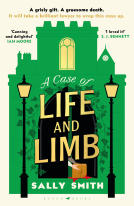
The Abbess of Whitby
A novel of Hild of Northumbria
by Jill Dalladay
This title was previously available on NetGalley and is now archived.
Send NetGalley books directly to your Kindle or Kindle app
1
To read on a Kindle or Kindle app, please add kindle@netgalley.com as an approved email address to receive files in your Amazon account. Click here for step-by-step instructions.
2
Also find your Kindle email address within your Amazon account, and enter it here.
Pub Date 21 Aug 2015 | Archive Date 10 Jan 2016
Lion Hudson Plc | Lion Fiction
Description
Available Editions
| EDITION | Other Format |
| ISBN | 9781782641544 |
| PRICE | US$0.00 (USD) |
Featured Reviews
 Helen S, Reviewer
Helen S, Reviewer
Set in 7th century Britain, The Abbess of Whitby begins with the young Hild at the Northumbrian court of King Edwin, her great-uncle. Hild has just been chosen to be a handmaiden of Eostre, the pagan goddess of fertility, but when she, along with Edwin and his other courtiers, is baptised into the Christian faith, this marks the beginning of a transition from the old religion and way of life to the new.
Most of the factual information we have regarding Hild comes from the Venerable Bede’s writings in 731, the Ecclesiastical History of the English People. He tells us nothing about Hild’s life between the ages of thirteen and thirty-three, so Jill Dalladay has imagined a story for her based on what we do know about the kingdom of Northumbria at that time and how a woman of her status and background may have lived. She creates a marriage for Hild with the fictional Cerdic of Din Edin (Edinburgh) – a marriage arranged for political reasons, as was common in that period.
There is no love between Hild and her husband (at least not at first) and she is unhappy about leaving her home and her friends behind, but she doesn’t have time to feel sorry for herself because this is an eventful time and there is always something happening: a war, a raid, or an outbreak of plague. As the years go by, Hild also grows more curious about the Christian religion, especially when she meets and gets to know the monk Aidan. Eventually, as we know from Bede, she becomes the abbess of Whitby Abbey, where the Synod of Whitby is held in 664 at which the method for calculating the date of Easter is established.
This was an interesting read and a good portrayal of 7th century life with all of its hardships and dangers. However, I didn’t find it a particularly gripping novel and although it’s not badly written, it lacks both the beautiful lyrical prose of Nicola Griffith’s Hild and the epic high fantasy feel of Edoardo Albert’s Northumbrian Thrones books. Still, there are not a lot of novels about women from such early periods of history and it was good to learn more about Hild and her world (even if not all of it is based on fact) to add to my existing knowledge.
Readers who liked this book also liked:
Elizabeth Crowens
General Fiction (Adult), Historical Fiction, Mystery & Thrillers


















